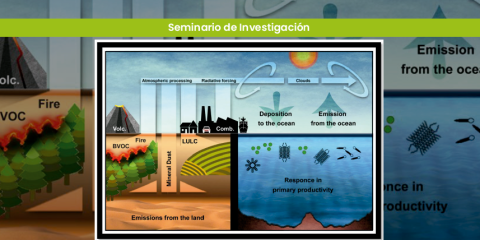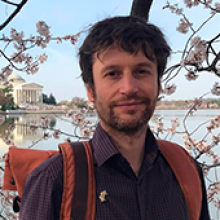
An Aerosol Odyssey: Navigating Nutrient Flux Changes to Remote Ecosystems
Research over the past few decades has highlighted the importance of understanding aerosol nutrient transport, its impacts on biogeochemical cycles and carbon dioxide removal, and the mechanistic pathways for these impacts. As various socio-economic pressures, climate changes, and advancements in technology progressively transform humanity’s way of living, the amount and geographical distribution of both natural and anthropogenic emissions to the atmosphere also change. It is necessary to trace the effects of such changes in the atmosphere and examine their implications for biogeochemical processes and the wider Earth System. This talk takes a journey from land to sea, following the story of how aerosols connect Earth System components. It also highlights some of the research navigation tools needed to progress the field and discuss the battle ahead in terms of climate change and human pollution impacts on the Earth’s health.
Conferencista

Douglas Hamilton
Ver más

Douglas Hamilton
“I undertook my undergraduate and masters studies at the University of East Anglia, UK where I studied the Eyjafjallajökull volcanic eruption of 2010. Analysis of the ash captivated me and I decided then to go into aerosol research for my academic career. I then undertook my PhD at Leeds University, UK in aerosol-climate modelling followed by a PostDoc at Cornell University, USA in aerosol-biogeochemistry modelling. I'm fascinated by how the Earth system works, and in particular how aerosols connect its different components. I'm currently an Assistant Professor in Earth System science in the Marine, Earth, and Atmospheric Sciences department at North Carolina State University, USA. Much of my current research revolves around further understanding the role of fires in the Earth System and how human activity is re-shaping fire regimes in the Anthropocene. I was an artist before becoming a scientist and enjoy thinking of new ways to bridge those worlds via science communication and visualization”
